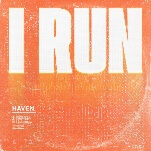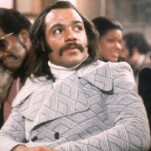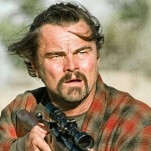The story follows Bobby Numbly through five stages in his life: his early childhood as the son of a detached father and deeply unhappy mother; his teenage years as a glam-and prog-rock fan experimenting with sex and drugs; his lethargic, depressing early adulthood; his angry 20s as a punk-rock enthusiast; and finally his days as an elderly man that has finally found contentment. Bobby’s experiences echo the creator’s, but this is not Hernandez’s life; rather than taking a straightforward autobiographical approach, the cartoonist captures the emotional truth of his adolescence and adulthood through heightened fictional circumstances.
While Huey—the Gilbert stand-in of Marble Season—was almost always surrounded by people, Bobby lives a far more isolated life. He’s an only child with parents who don’t show him affection, and he’s teased by the kids in his neighborhood because of his large head, hence the nickname that serves as the book’s title. Bobby’s image of himself is reflected in his head; as a vulnerable child, he’s exposed to the world and he suffers for it, so he grows out his hair to distract from the size of his skull as a self-conscious teenager. He wears it long until punk enters his life, giving him the confidence to not just cut his hair short, but to dye it green so that his head immediately grabs attention.
With one notable exception, each chapter of Bumperhead begins with a page showing a profile of Bobby’s head against that dark, cloudy sky, a mass that is given haunting form in one of child Bobby’s nightmares. That sky represents the emotional turbulence within Bobby, and when it gets to the point that Bobby loses himself in his feelings (part three), that introductory image shows only the clouds. He loses all sense of identity in his early 20s as he falls into a depression that is heavily rooted in his inability to recover from past trauma, but he’s able to break free by embracing the primal anger of punk rock. That anger gives him new passion, but it also causes problems as Bobby rages longer and comes into contact with other fiery personalities.
Gilbert and his brother Jaime Hernandez are two of the sharpest cartoonists working in the industry, combining a vast spectrum of artistic influences to create distinct styles that have a definite family resemblance. They both specialize in delicately balanced black-and-white visuals, but Jaime’s line is cleaner and his characters less exaggerated, adding realism to his work. Gilbert regularly pushes his art into more surreal and expressionistic territory, as evidenced in Bumperhead during Bobby’s cloudy nightmares that turn the sky into a monster that is always looming overhead.
Gilbert has a talent for distilling a complex emotional situation in a single silent image, and some of the most important moments of Bumperhead occur when no words are being said. Bobby looking outside to see his mother in her usual position smoking a cigarette on the front lawn, so close in proximity yet so emotionally distant. Bobby and his father visiting his mother’s grave, the silhouette of a giant gravestone between them symbolizing the break in their relationship after her death. (That gravestone does not mark her actual burial place, which is indicated by a small, nondescript stone.) Punk Bobby seeing two kids playing outside, embodying the qualities of a past that is quickly fading from his memory. These are all images that are staged to evoke a specific emotional reaction, and shouldn’t be glossed over because there’s no text.
Because so much of the story is about capturing specific feelings, it’s best not to rush when reading Bumperhead. The body language, textures, and how character designs interact with each other as well as the environments are all significant to the story. Bobby’s friend Rufus, a heavy drug user, is dressed in a ratty jacket that is outlined with a squiggly line that radiates anxiety and discomfort when put up against the smoother designs of the other characters. Chili, Bobby’s girlfriend when he goes punk, has black puffs of hair that change shape depending on her attitude; they all go to one side like a fireball when she’s feeling energized, extend in all directions like barbs when she’s feeling hostile, and relax during those rare moments when Chili cools down.
Cultural references and clothing styles indicate specific time periods for Bumperhead, but from the beginning it’s clear there’s something strange happening with the past, present, and future in this story. One of Bobby’s friends uses an iPad stocked with information to bring insight from the future into past events, providing anthropological context for developments in the character’s lives.
That iPad represents a future, but not necessarily the future for these characters, and the final chapter continues to toy with the passage of time as it shows the cast as senior citizens living in what appears to be an earlier period based on the clothing and environment. Time and memory are fluid things in Hernandez’s hands, and as life goes on, they only become more slippery. Holding on to the past is impossible, and the best thing for the present and the future is letting go.








































